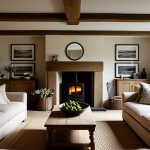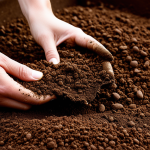Balancing Historic Preservation and Sustainable Renovation
Balancing heritage preservation with sustainable transformations in historic home renovation is a nuanced task. In Cambridge, historic homes often feature distinctive architectural elements—like ornate woodwork, original brickwork, or period fireplaces—that are essential to protect. Identifying these key features forms the foundation of any successful eco-friendly renovation.
Sustainable transformations honour these heritage aspects by integrating green practices thoughtfully. For example, upgrading insulation can be done discreetly without compromising wall structures, while using traditional materials that retain visual authenticity. The challenge lies in marrying modern energy efficiency with preservation, ensuring retrofits respect the historical context.
Also to read : Navigating fire safety laws in leeds: essential tactics for ensuring high-rise building compliance
Cambridge homeowners benefit from employing eco-friendly renovation techniques that use renewable resources while preserving local character. This involves selecting sustainable transformations that enhance thermal performance, reduce carbon footprint, and maintain the unique charm of heritage properties. Essentially, sustainable transformations in historic home renovation demand a careful balance—one that values both the past’s craftsmanship and the future’s environmental needs.
Sustainable Renovation Techniques for Historic Residences
When pursuing eco-conscious renovation methods in historic home renovation, it’s vital to enhance energy efficiency without compromising a building’s character. Retrofitting insulation in walls and roofs of historic properties must be done carefully to protect original materials. Using breathable, natural insulations prevents moisture buildup that could damage heritage features.
In parallel : Transform your brighton flat: the ultimate guide to evaluating rooftop garden opportunities
Upgrading windows with energy-efficient glazing while preserving original frames balances green building techniques and aesthetic integrity. Similarly, integrating modern, efficient heating and cooling systems tailored to historic properties optimizes comfort and energy savings with minimal structural impact.
Incorporating energy-efficient lighting solutions preserves historic ambiance and reduces electricity use. Renewable energy integration, such as discreet solar panels or ground-source heat pumps, offers sustainable power without visually detracting from the period architecture.
Water conservation strategies are another key element. Installing low-flow fixtures and rainwater harvesting can be adapted to historic layouts, reducing water usage while respecting the home’s design and plumbing constraints.
These historic property upgrades exemplify how technical improvements and preservation goals can merge, enabling a successful sustainable transformation that safeguards the home’s legacy while meeting modern environmental standards.
Balancing Historic Preservation and Sustainable Renovation
Balancing heritage preservation with sustainable transformations in Cambridge’s historic homes requires a thoughtful approach. Essential architectural features—such as crown moldings, original brick facades, and antique woodwork—must be identified and retained to maintain a home’s historic integrity. These elements serve as touchstones of authenticity amid modern upgrades.
To successfully achieve eco-friendly renovation in Cambridge, integration of green practices with traditional designs is crucial. For example, when installing insulation, using breathable natural materials preserves wall structures without trapping moisture, protecting delicate heritage finishes. Similarly, repairing or replacing windows with energy-efficient glazing that fits original frames maintains historic character while improving efficiency.
Selecting restoration materials that echo the period style, yet possess low environmental impact, ensures that sustainable transformations do not come at the cost of historic authenticity. This balance supports long-term building health and keeps the visual charm local residents cherish.
Ultimately, heritage preservation and sustainable transformations in historic home renovation must work hand in hand: honoring the past while embracing eco-friendly renovation techniques that future-proof treasured Cambridge properties.
Balancing Historic Preservation and Sustainable Renovation
In historic home renovation, the foremost priority is heritage preservation—safeguarding defining features like original woodwork, masonry, and period details that give Cambridge homes their character. These key elements must be meticulously identified before any work begins, ensuring their protection throughout sustainable transformations.
Incorporating eco-friendly renovation Cambridge practices means selecting green approaches that respect these traditional materials and designs. For example, using natural, breathable insulation maintains the integrity of walls, preventing moisture damage to fragile plaster or timber. Similarly, restoration with sustainable materials that visually match original finishes keeps the historic aesthetic intact while reducing environmental impact.
Balancing these goals requires thoughtful integration: green building techniques that do not overwhelm or alter unique architectural features. Sustainable transformations can include discreet energy upgrades that blend seamlessly with vintage craftsmanship. This approach honors both the cultural legacy of Cambridge’s heritage homes and the imperative to minimize carbon footprints, demonstrating that heritage preservation and sustainability together form a harmonious, achievable path forward.
Balancing Historic Preservation and Sustainable Renovation
Balancing heritage preservation with sustainable transformations in Cambridge’s historic home renovation demands keen attention to detail. Preserving key architectural features—such as original cornices, handcrafted trim, and aged brickwork—ensures a property’s historic identity remains intact. These elements serve not only as aesthetic anchors but also as testimonies of the home’s legacy.
How can green practices be integrated without disrupting these features? Utilizing eco-friendly renovation Cambridge techniques like applying breathable insulation protects both the original structures and the environment. This approach prevents moisture damage that often accompanies poorly planned retrofits. Likewise, selecting traditional materials that match historic designs while offering low environmental impact bridges the gap between past and present building philosophies.
Identifying which features are critical to a home’s character involves consultation with heritage experts and careful assessment. By blending these insights with sustainable transformations—including discreet energy-efficient upgrades—homeowners can achieve a harmonious renovation. This dual focus respects Cambridge’s deep-rooted architectural traditions while advancing eco-conscious goals, demonstrating that heritage preservation and sustainability complement rather than conflict within historic home renovation.
Balancing Historic Preservation and Sustainable Renovation
Balancing heritage preservation with sustainable transformations in historic home renovation requires carefully identifying key architectural features integral to Cambridge’s character. Essential elements—such as original woodwork, brickwork, and period moldings—must be protected to maintain authenticity. Which parts precisely should be preserved often involves consulting heritage assessments to pinpoint features that define the home’s historic value.
Implementing eco-friendly renovation Cambridge techniques means integrating green building practices that complement, rather than compromise, these critical elements. For example, selecting breathable, natural insulation materials safeguards original wall structures from moisture damage—a common concern in retrofits. Similarly, restoration using sustainable materials that visually match historic finishes ensures energy upgrades harmonize with traditional designs.
How can sustainable transformations be seamlessly merged? Solutions include discreet energy-efficient installations and using low-impact materials that respect the home’s architectural language. This approach ensures eco-conscious renovation enhances comfort and efficiency while championing heritage preservation. Ultimately, carefully balancing these priorities proves that protecting historical integrity and embracing sustainability can coexist successfully in Cambridge’s historic home renovation landscape.
Balancing Historic Preservation and Sustainable Renovation
Preserving heritage preservation while achieving sustainable transformations in Cambridge’s historic home renovation involves carefully safeguarding defining architectural features. Original woodwork, masonry, and period moldings represent not only aesthetic significance but the cultural fabric of these homes. Identifying such key elements early on ensures that renovations respect the historic integrity.
How can green practices coexist with this preservation? The answer lies in integrating eco-friendly renovation Cambridge techniques that harmonize with traditional designs. For example, using breathable, natural insulation secures the original wall structure from moisture damage without altering its appearance. Restoration materials selected for their sustainability must visually match historic finishes—bridging old-world charm with modern low-impact building standards.
Sustainable transformations often involve discreet upgrades like energy-efficient window glazing fitted within original frames, or subtle improvements to heating systems that do not disturb the building fabric. These solutions exemplify how eco-conscious renovations can enhance comfort and efficiency while honouring historic character.
In essence, the balance is achieved by merging meticulous preservation efforts with thoughtful green building methods. This approach ensures Cambridge’s historic homes maintain their unique identity while embracing the environmental imperatives of today.




